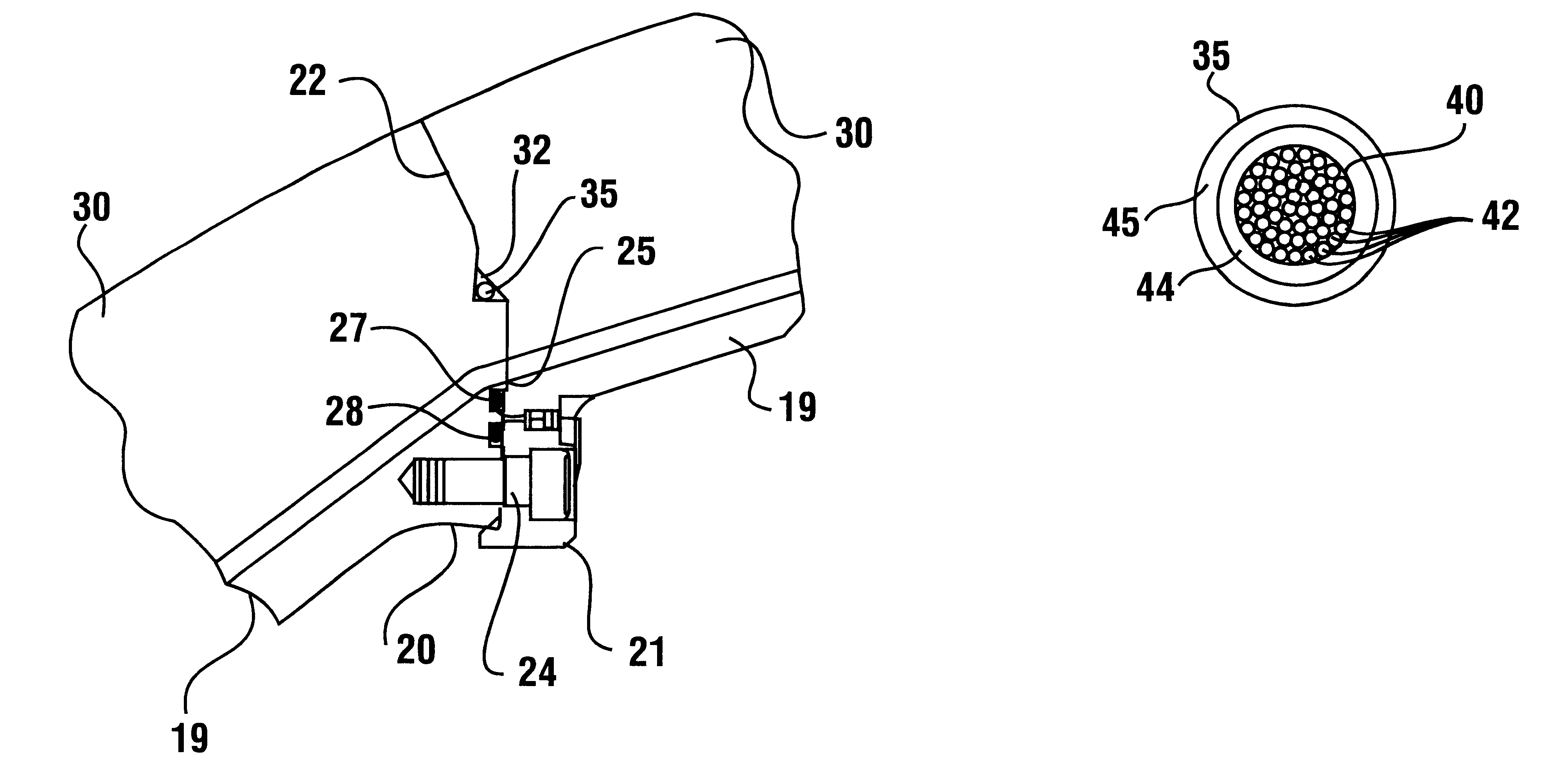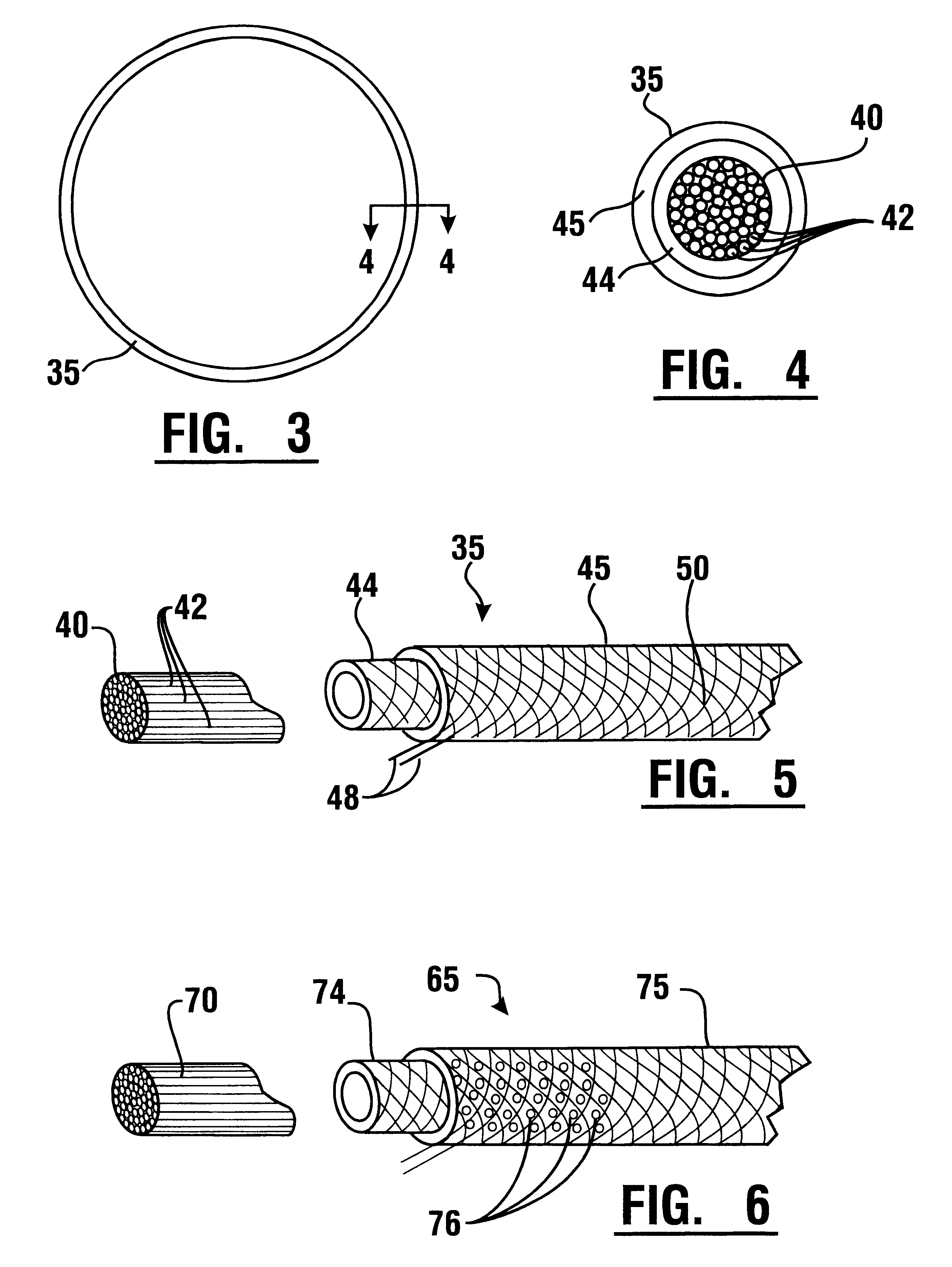Rocket motor joint construction including thermal barrier
a technology of thermal barrier and rocket motor, which is applied in the direction of vessel construction, marine propulsion, ornamental textile articles, etc., can solve the problems of affecting the changing the properties and/or dimensions of the casing structure, and not being able to verify the integrity of the seal arrangement. , to achieve the effect of enhancing the sealing effect, enhancing certain functions or properties of the thermal barrier, and facilitating assembly of rocket motor sections
- Summary
- Abstract
- Description
- Claims
- Application Information
AI Technical Summary
Benefits of technology
Problems solved by technology
Method used
Image
Examples
Embodiment Construction
Referring now to the drawings there is shown in FIG. 1 a solid rocket motor 10 in which the teachings of an exemplary embodiment of the present invention are applied. Rocket motor 10 is segmented and comprised of a plurality of generally cylindrical casings or casing sections 11. A frustum or nose fairing 12 is located at the forward end. A nozzle 14 and thrust vector control system are located at the aft end. The casings 11 are axially aligned and joined to one another through casing joints 15 therebetween. The casings are lined inside with tubular sections of rocket propellant 16, forming a central chamber 18 for enabling axial flow of rocket combustion gases during the rocket burn. Rocket motor nozzle 14 is segmented and comprised of a plurality of generally cylindrical or conical nozzle segments or sections 19.
In FIG. 2 is an enlarged view of a part of a lower casing joint 22 between adjacent nozzle segments 19. The joint 22 extends through mating flanges 20, 21 of forward and a...
PUM
| Property | Measurement | Unit |
|---|---|---|
| braid angle | aaaaa | aaaaa |
| temperatures | aaaaa | aaaaa |
| peak temperatures | aaaaa | aaaaa |
Abstract
Description
Claims
Application Information
 Login to View More
Login to View More - R&D
- Intellectual Property
- Life Sciences
- Materials
- Tech Scout
- Unparalleled Data Quality
- Higher Quality Content
- 60% Fewer Hallucinations
Browse by: Latest US Patents, China's latest patents, Technical Efficacy Thesaurus, Application Domain, Technology Topic, Popular Technical Reports.
© 2025 PatSnap. All rights reserved.Legal|Privacy policy|Modern Slavery Act Transparency Statement|Sitemap|About US| Contact US: help@patsnap.com



